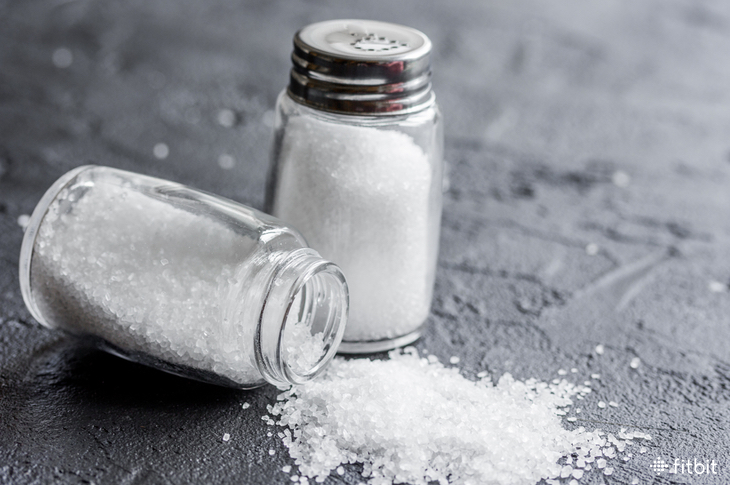
This American Heart Month, take charge of your salt habit once and for all. Although your body needs some sodium (the main component of salt) to work properly, most of us—about 90 percent—get too much. This can set the stage for high blood pressure, which raises your risk for heart attack and stroke.
But when it comes to knowing the exact amount you should be consuming, things can get, well, pretty salty. That’s because experts don’t always agree on how much is too much and who should be the most concerned. To make things even more complicated, recent research suggests a low-salt diet may actually be bad for your heart.
So how does all this information shake out? Read on to cut through the confusion and understand what’s really going on with salt.
Who Needs to Cut Back?
For decades, major health organizations and publications, such as the federal government’s Dietary Guidelines for Americans, have said that almost all Americans need to consume less sodium. The recommendation: Limit your daily intake to no more than 2,300 milligrams of sodium (or roughly a teaspoon of salt). “Most people get way more than that—about 3,400 milligrams a day,” says Rahaf Al Bochi, RDN, owner of Olive Tree Nutrition and a spokesperson for the Academy of Nutrition and Dietetics.
But over the past few years, studies have been published that challenge these recommendations. They suggest that high-salt diets are only bad for people who already have high blood pressure, and that low-salt diets may actually be harmful to the rest of us. According to one research analysis, scientists found that people who consumed the most sodium as well as the least sodium per day were more likely to experience a major cardiovascular event, such as a heart attack. Those who consumed the current average—between 2,700 and 5,000 milligrams daily—actually had the most protection against dying of any cause.
But before you grab the salt shaker, take note: These studies have been criticized for their shaky science. Instead of putting otherwise-healthy people on a prescribed diet and tracking their results, they’re based on what people reported eating, says Brenda M. Davy, Ph.D., RDN, a professor of human nutrition, foods, and exercise at Virginia Tech University in Blacksburg, Virginia. What that means: Those who reported eating too-little sodium may already have health issues to begin with, which could have skewed results.
What’s more, “the overwhelming majority of studies conclude that cutting back on sodium protects the heart,” says Al Bochi. And salt-reduction initiatives are working: Countries with those types of programs have seen a decline in cases of high blood pressure.
How Low Should You Go?
Although most experts agree that cutting back on sodium is the way to go, their recommendations differ. The federal government and Institutes of Medicine recommend no more than 2,300 milligrams daily. The World Health Organization puts the limit at 2,000 milligrams. The American Heart Association agrees with them, but says the ideal amount is actually 1,500 milligrams or less per day.
So what number is right? “Most people should aim for 2,300 milligrams or less per day,” says Davy. But you may need more or less sodium in your diet, depending on factors like your genes and lifestyle.
For example, those with health conditions like high blood pressure, diabetes, or chronic kidney disease, and those who are older than 51 or African-American, may need to aim for the lower limit of 1,500 milligrams. Some people are also more sensitive to sodium’s effects, so they may need to cut back by even more.
Meanwhile, endurance athletes may not need to slash their intake at all. “You lose sodium through sweat,” explains Al Bochi. “If you’re exercising for long periods or in high temperatures, you may need to replace that sodium through food and drink.” The bottom line? Talk to your doctor or dietitian about what’s best for you.
Where Should You Start?
While putting down the salt shaker can help, it’s won’t make the biggest impact on your sodium intake. About 70 percent of the sodium in the average diet comes from processed foods and restaurant meals. “Preparing more of your food at home is helpful,” says Davy. That’s because you can control the amount of sodium that goes into those dishes. (Needs some suggestions? Here are some simple swaps that can help you cut down on the salty stuff.)
And when you can, snack on fresh fruits and vegetables instead of packaged foods like chips and pretzels. Produce is often high in potassium, a mineral that may help flush extra sodium from your body. At the supermarket, read nutrition labels and look for low-sodium products. Many manufacturers add sodium for texture or as a preservative, so it’s found in many surprising foods, such as corn flakes and hot cocoa. Once you start enjoying the vibrant, natural flavors of whole foods, you might not even miss the added salt.
This information is for educational purposes only and is not intended as a substitute for medical diagnosis or treatment. You should not use this information to diagnose or treat a health problem or condition. Always check with your doctor before changing your diet, altering your sleep habits, taking supplements, or starting a new fitness routine.

Can the Fitbit track your sodium intake?